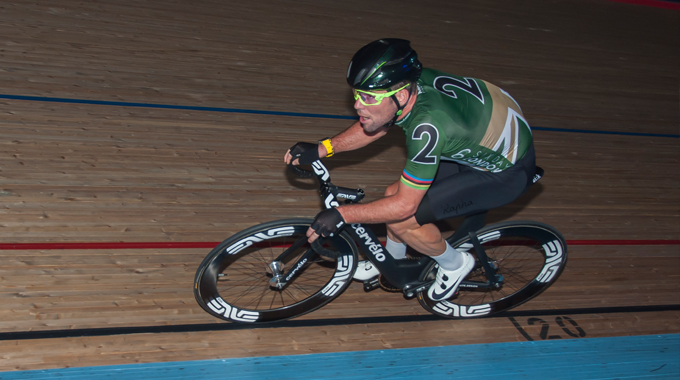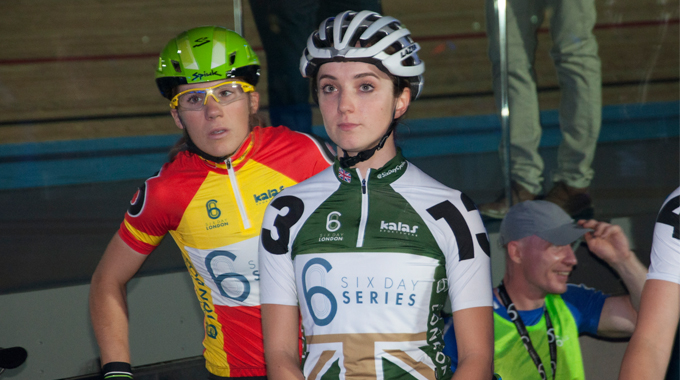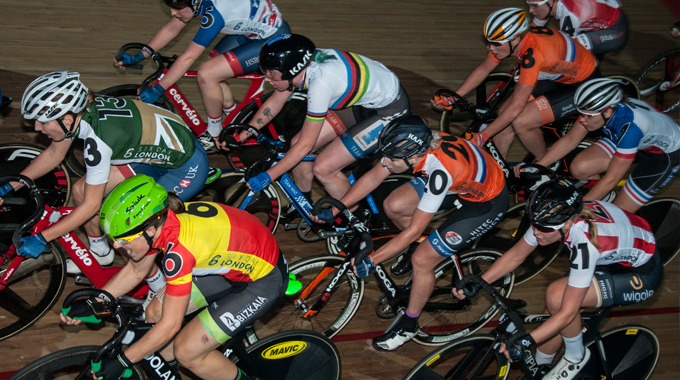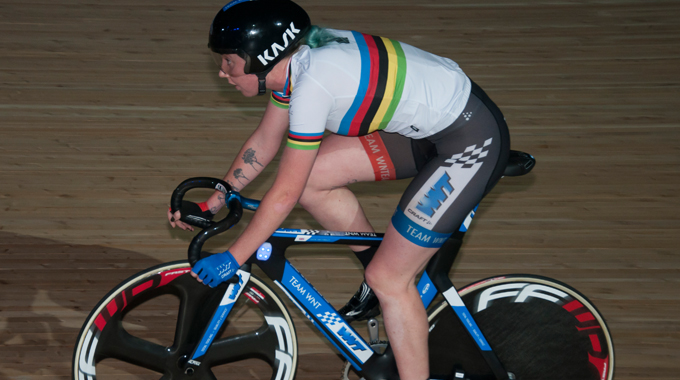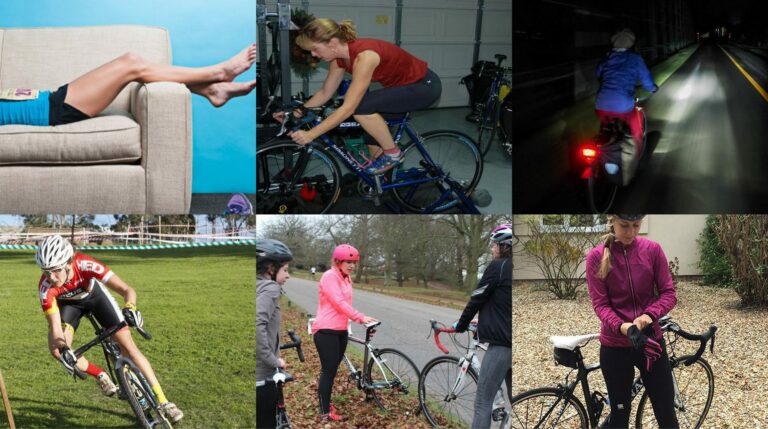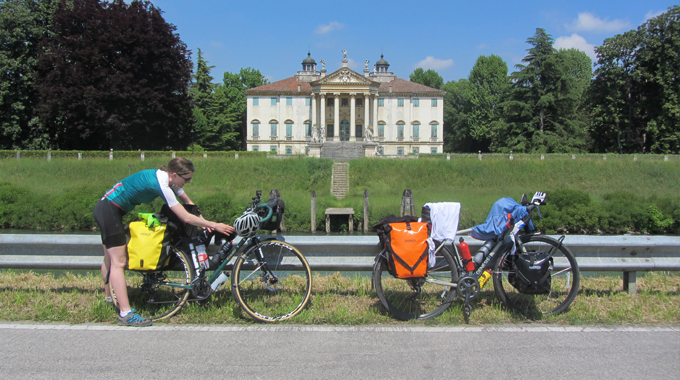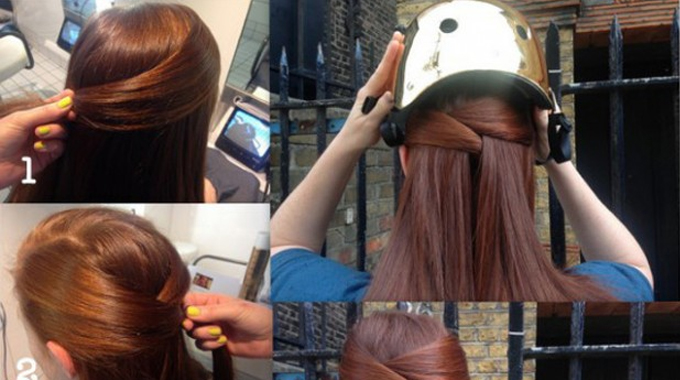Words by Amy Sedghi
Photos by Andy Thornley
With the music in full swing and some of the world’s best female track riders flying past, the cheering of the crowd becomes a roar as we enter the penultimate lap of the women’s elimination race at the Six Day London Cycling Event.
Katie Archibald is whizzing through to victory, nailing her second win of the evening, giving a bold declaration that she – the reigning women’s Six-Day London champion – means business.
But this is not your typical track racing event, for the spectators or the riders. A DJ is positioned in the centre of the track, mixing tunes on a rotating booth and purple light bathes the cyclists as they roll around the boards. Welcome to Six Day London, where the beer flows, the racing is fast and the music never ends.
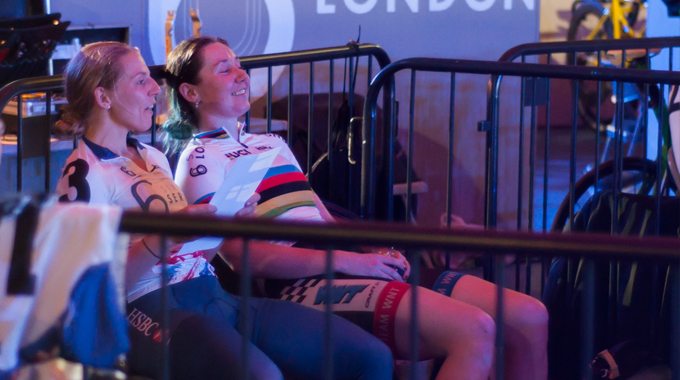
“It’s odd because in terms of the field of the competition, [it’s] one of the hardest that I expect I’ll get all season,” says Archibald, having finished the first evening of the women’s event winning two out of three of the races. “In terms of the atmosphere and the between-race vibe, it’s like being on holiday.”


